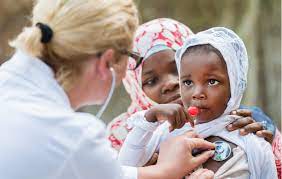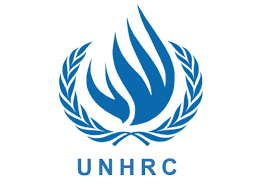Want help to write your Essay or Assignments? Click here
Spirituality
Introduction
Most philosophers believe that every person has a worldview. They define the worldview as a framework and commitment of ideas and attitudes about human beings, life, and the world. They further describe a worldview as a set of beliefs that man holds to and lives by. It is of great importance for human beings to discover their worldviews and abide to them.
Generally, there is no widely agreed definition of spirituality. Traditionally, spirituality is viewed as the process of reformation that is aimed at recovering the original shape of man. However in present times, spirituality has been based on subjective experience that incorporates personal growth or transformation, and this is separate from the religious views.
Spirituality can be defined from different theories including scientism which is the belief in science and using scientific evidence to describe spiritually. Scientism is a belief held by scholars in their bid for the search for physical truth. On the other hand, pluralism refers to the process of viewing the society from multiple entities which work as a single unit. An example of pluralism is the society with different cultural backgrounds which maintains their tradition. Post modernism describes spirituality as a concept of modifying traditional beliefs according to modern ideas.
Prime reality
Prime reality is the understanding of what is real. This involves understanding the origin of faith of individuals. According to Christianity, God is real, and it is through his intentions that we can live. (Bak, 2013) posits that this definition is not applicable to every individual since non-Christians do not believe in God. Non-Christians believe that God cannot be present in all places at all times. However, Christians believe that Gods powers are unlimited. Prime reality is what one believes in depending on his views of reality. Believing that God is present and available in all places at all times is a reality for specific people but not others.
Nature of the world around us
From a religious perspective, nature is God’s creation, and the world is part of God‘s plan for man. Being a Christian, I believe that God is the creator of all things. According to the Bible teachings, God provided man with natural things in the world for man to enjoy God’s creation.
Certain situation where man experiences difficulties is part of the reality as it forms part of the learning process. As a Christian, I believe that understanding God’s plan is beyond us despite the fact that God has given us the gift of reasoning. Christians rely on faith to guide their understanding of the world (Murphy, 2016).
Want help to write your Essay or Assignments? Click here
Human beings
Murphy (2016) states that humans are God’s creation; human beings have life and a sense of self-awareness to understand their purpose on earth .but others view human as complex machine developed due to scientific discovery. But for Christians, human being are God’s superior creation because God created man giving him unique abilities compared to other God’s creation on earth .this dispute the fact that human being is termed as machines.
Since God created human beings in his image, these means human beings are above all other creation on earth. Therefore, their role is to take care of the world but not undermine the rights of other creations. Human being need to understand God intention which initial living in harmony and with other creation on earth (Murphy, 2016).
What happens to a person at death?
When people die they leave behind memories, which are cherished depending on an individual action while on earth. Apart from Christians others believe in life after death, this is his reason why several people perform good deeds while still alive because they believe God will judge them according to their actions.
Christian believes in life after death whereby the physical body dies, but our souls remain alive to start a new life in heaven. Murphy(2016) reports that when people dietheir souls escape from their bodiesand return to God the creator.
Christians believe that righteous people will be granted eternal life by God if their actions were in line with God’s commandments. According to (Murphy, 2016), the judgment day is important because this is the day when God decides our fate. This is the day that our actions are evaluated to determine if we are worth living with God in heaven. God’s Ten Commandments are rules given by God to our ancestors to guide our action. Therefore by not obeying God’s teachings we are likely to lose the chance of being granted eternal life.
The possibility to know anything at all
Knowing anything means the understanding of our worldview based on what influence our actions. Having different sets of beliefs reveals the different perspective of our view of the world. When we experience continuous changes as we go through different circumstances enables us to increase our levels of knowledge. Seeking God’s guidance is important to gain more knowledge and understand our purpose on earth (Tomasello, 2014).
How do we know what is right or wrong?
Tomasello (2014) explains how humans determine what is wrong and right by conforming to Gods moral law. In his view, moral laws reflect God’ s purpose for man. Human beings are expected to live by Gods’ intention. God moral laws are the Ten Commandments in the Bible that stipulate various acts that need to be emulated by man. However, people fail to understand God’s purpose hence violating God’s laws.
Christians believe that God makes them undergo difficulties as a punishment for their wrongdoing. Other people believe best for themselves and acceptable to our fellow humans are termed as the right thing, while what can cause harm to the majority is termed as wrong (Tomasello, 2014).
What is the meaning of human history?
History can be defined as the sequence of events that leads to fulfilling God purpose; however history is also defined as important records about past events that formed part of our identity. Human history from a Christian perspective portrays God as a wise, holy, powerful, true and the creator of the world.
Christian’s link human history to God creation, from a Christina perspective, human history cannot be defined without explaining Gods creation. Non –Christians view human history based on specific events that they value while some people believe that human history is imagination generated from the past events.
Conclusion
Worldviews are significant whether man recognizes them or not. They offer a basis upon which the actions and corresponding moral values are based. Our worldview concerning reality, human beings and understand of what is right or wrong differ based on individual perspective. Views presented by pluralist, scientist and post modernist depend of their individual world view.
References
Bak, P. (2013). How nature works: the science of self-organized criticality. Springer Science & Business Media.
Murphy, M. C. (2016). God and moral law. Oxford University Press.
Tomasello, M. (2014). A natural history of human thinking. Harvard University Press.
Want help to write your Essay or Assignments? Click here









